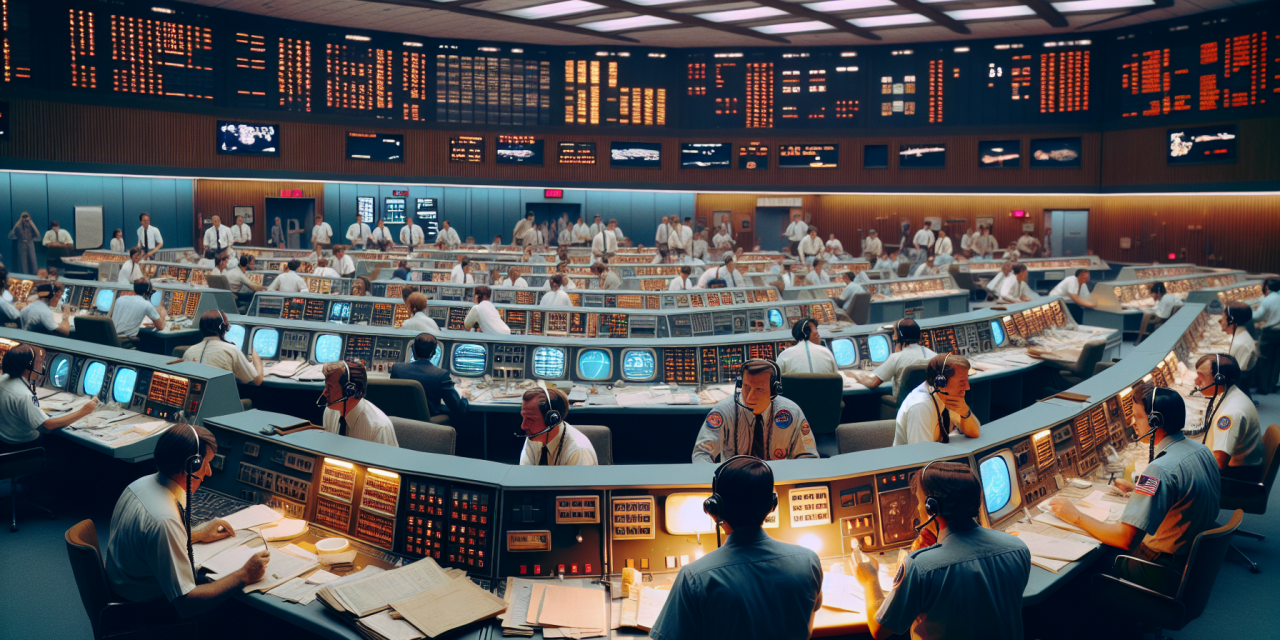Picture this: it’s April 13, 1970, and you’re sitting in a room filled with dozens of people, each staring intently at screens showing numbers, graphs, and blinking lights. Suddenly, a calm voice crackles over the radio from space: “Houston, we have a problem.” This moment would become one of the most famous phrases in exploration history, but what happened next tells us everything about the hidden heroes who make impossible missions possible.
Behind every astronaut floating in space, there’s an entire army of brilliant minds working tirelessly on Earth. We call this place Mission Control, and it’s where some of the most incredible teamwork in human history takes place every single day. Think of it like the ultimate multiplayer video game, except the stakes are real, the challenges are enormous, and the team members aren’t just trying to win points—they’re trying to bring people home safely from space.
The Orchestra Behind the Curtain
When we watch a space mission on TV, we usually see the astronauts floating around in their shiny suits, conducting experiments and taking stunning photos of Earth. But just like watching a symphony performance, we’re only seeing the people on stage. The real magic happens because of all the musicians we can’t see, each playing their unique part to create something beautiful together.
Mission Control in Houston operates like a giant brain with hundreds of specialized neurons. Each person has a specific job—some monitor the spacecraft’s oxygen levels, others track its position, and still others watch the weather patterns back on Earth. There’s someone whose entire job is just to listen to the astronauts’ voices and make sure they sound healthy and alert. Another person spends their day calculating exactly how much fuel is left and whether it’s enough to get home.
Here’s what makes it truly fascinating: no single person understands every aspect of the mission. The person tracking the spacecraft’s orbit might not know how the life support systems work, and the communications specialist might not understand the intricate details of rocket propulsion. Yet somehow, when they all work together, they can solve problems that would be impossible for any individual to tackle alone.
When Problems Become Puzzles
Remember our Apollo 13 story? When astronaut Jack Swigert radioed those famous words, “Houston, we have a problem,” Mission Control transformed into something like the world’s most important escape room. An explosion had damaged their spacecraft’s oxygen tanks, and suddenly a routine trip to the moon became a desperate race against time to get three people home alive.
But here’s the beautiful part: instead of panicking, hundreds of people immediately started doing what they do best—thinking like coders. They broke this massive, terrifying problem down into smaller, manageable pieces. One team focused on conserving power, another worked on navigation, and yet another figured out how to build an air filter using only materials available on the spacecraft.
It was like a giant debugging session, except instead of fixing code, they were fixing a real-life crisis 200,000 miles away. Each team would test their solutions on identical equipment here on Earth, share their findings with other teams, and iterate quickly to find what worked. The programmers among them literally wrote new code on the spot, creating navigation programs that had never been needed before.
The Hidden Heroes of Technology
This pattern of behind-the-scenes collaboration isn’t unique to space missions—it’s everywhere in technology. Think about the last time you watched a video on your phone. While you were enjoying those funny cat videos, dozens of different systems were working together seamlessly: servers delivering the video data, algorithms deciding the best image quality for your connection, software keeping your battery from draining too quickly, and security systems protecting your personal information.
Each of these systems was built by different teams of people, often working for completely different companies, yet they all collaborate invisibly to create your viewing experience. The person who programmed the video compression algorithm probably never met the person who designed your phone’s battery management system, but their work fits together perfectly.
Even in smaller technology projects, this collaborative pattern emerges naturally. When a group of students builds a robot, one person might focus on programming its movements, another on designing its sensors, and a third on creating the user interface. None of them could build the entire robot alone, but together they create something amazing.
Building Your Own Mission Control
You don’t need to work at NASA to experience this kind of powerful collaboration. Every time you work on a group project, you’re essentially creating your own mini Mission Control. The key is understanding that everyone brings different strengths to the team.
Maybe you’re great at breaking big problems into smaller pieces—that makes you perfect for the role of “mission architect,” someone who helps the team see the big picture and plan their approach. Perhaps your friend excels at paying attention to tiny details that others might miss—they’d be fantastic as a “quality controller,” making sure everything works correctly before moving to the next step.
Some people are natural debuggers, excellent at figuring out why something isn’t working as expected. Others are brilliant at explaining complex ideas in simple ways, making them ideal “communications specialists” who help team members understand each other’s work. And some team members are great at staying calm under pressure and helping everyone focus when things get stressful.
The magic happens when you recognize these different strengths and organize your team accordingly. Instead of everyone trying to do everything, you can assign roles that match people’s natural abilities and interests.
Communication: The Secret Ingredient
Back in Mission Control, there’s a reason everyone wears headsets and follows strict communication protocols. When you’re solving complex problems under pressure, clear communication isn’t just helpful—it’s absolutely critical. The same is true for any collaborative technology project.
In coding projects, teams use tools like version control systems (think of them as super-powered “save” functions that keep track of everyone’s changes) and documentation (detailed notes explaining how different parts of the project work). They hold regular meetings where team members share updates, discuss challenges, and coordinate their efforts.
But the most important communication skill isn’t technical at all—it’s knowing how to ask for help when you need it, and how to offer help when someone else is struggling. In Mission Control, there’s no shame in saying “I need another perspective on this problem” or “Has anyone seen this issue before?” In fact, asking for help is considered a sign of professional wisdom, not weakness.
The Ripple Effects of Great teamwork
When teams work well together, they accomplish far more than the sum of their individual contributions. The Apollo 13 mission controllers didn’t just save three astronauts—they developed new problem-solving techniques and technologies that benefited countless future missions. Many of the creative solutions they invented under pressure became standard procedures for handling emergencies.
This ripple effect happens in technology projects too. When a team collaborates effectively on one project, they develop better ways of working together that make their next project even more successful. They learn each other’s strengths, develop shared vocabulary for discussing complex ideas, and build trust that makes them willing to take creative risks together.
Some of the most important breakthroughs in computing happened because teams found ways to combine their different perspectives and expertise. The development of the Internet, for example, required collaboration between computer scientists, electrical engineers, communications specialists, and even social scientists who understood how people might want to use such a system.
The next time you see a smoothly functioning piece of technology—whether it’s a space mission, a mobile app, or a robotics competition—remember that behind every seamless user experience is a team of people who figured out how to work together effectively. They learned to communicate clearly, trust each other’s expertise, and combine their individual strengths into something far greater than any of them could have achieved alone. In a world full of complex challenges, that might be the most valuable skill of all.








